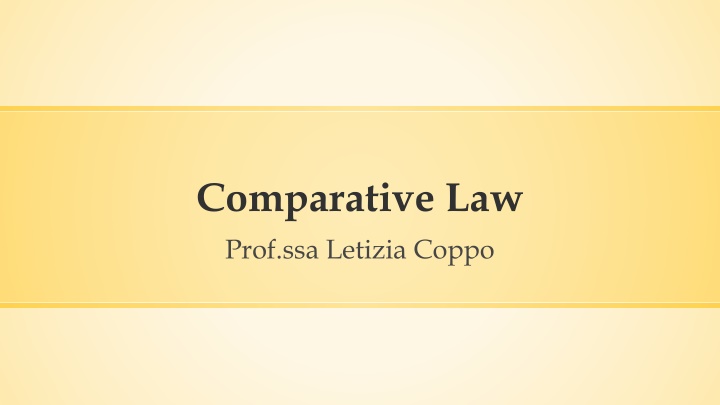
Historical Origins of English Law: Formation and Evolution
Explore the historical origins of English law from the Medieval Period through the development of a well-organized feudal system and the establishment of central royal authority. Discover the evolution of the judiciary system, procedural rules, and the significance of writs in shaping English legal traditions.
Download Presentation

Please find below an Image/Link to download the presentation.
The content on the website is provided AS IS for your information and personal use only. It may not be sold, licensed, or shared on other websites without obtaining consent from the author. If you encounter any issues during the download, it is possible that the publisher has removed the file from their server.
You are allowed to download the files provided on this website for personal or commercial use, subject to the condition that they are used lawfully. All files are the property of their respective owners.
The content on the website is provided AS IS for your information and personal use only. It may not be sold, licensed, or shared on other websites without obtaining consent from the author.
E N D
Presentation Transcript
Comparative Law Prof.ssa Letizia Coppo
THE COMMON LAW TRADITION ENGLISH LAW
HISTORICAL ORIGINS - FORMATION OF ENGLISH LAW I. The Medieval Period: Normans and Feudalism 1066 a.D. Battle of Hastings and Norman conquest of England. Construction of a well-organised feudal system, where land belong to the king and was awarded to subjects as a tenancy.
HISTORICAL ORIGINS - FORMATION OF ENGLISH LAW Political context Strong central royal authority Net of permanent administrative officers Centralised judicial system, with its own procedural rules
HISTORICAL ORIGINS - FORMATION OF ENGLISH LAW Organisation of judiciary (since 1300 up to XVII century) 1) Curia Regis or Exchequer: supreme treasury and jurisdiction for tax litigation. 2) Court of Common Pleas: jurisdiction over disputes between individuals; power to supervise lower courts run by sheriffs. 3) Court of King s Bench: matters of political significance.
HISTORICAL ORIGINS - FORMATION OF ENGLISH LAW Procedural system: procedural rules of royal courts were more modern and progressive, as based on forms of action made available by the royal administration (more authority and prestige). Local rules applied byAnglo-Saxon tribes lost significance. A formal system of claims developed, which was unconsciously close to ancient Roman trial structure.
HISTORICAL ORIGINS - FORMATION OF ENGLISH LAW The system of writs In common language they were letters from a superior, whether ecclesiastical or law, containing a message for the addressee with a request or an instruction. In legal language they were commands of the king directed to the competent officials, judges or magistrates, containing a brief description of the matter under dispute and instructing the addressee to call the defendant into court and solve the conflict before the parties.
HISTORICAL ORIGINS - FORMATION OF ENGLISH LAW Writ of right: it enabled a vassal to demand that defendant refrains from interfering with his right to possess and use a piece of land. Writ of customs and services: it enabled the landlord to claim from the vassal that he performed his services. Writ of replevin: claim that the superior releases the chattels on which he has distrained in order to exact the feudal services.
HISTORICAL ORIGINS - FORMATION OF ENGLISH LAW Main features of writs They were typical and begun to be standardised, but with a strong evolutionary potential (see writ of trespass). Each matched with certain facts and a certain claim and had its own procedural rules; a miss-match meant the denial of the claim.






















